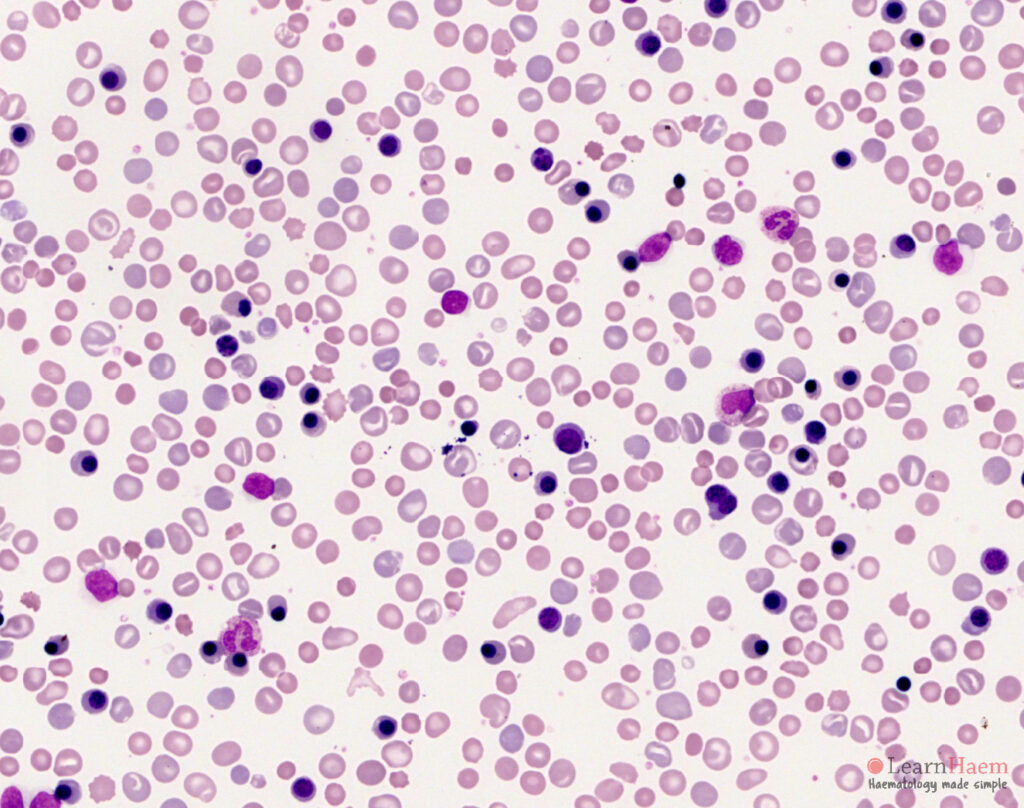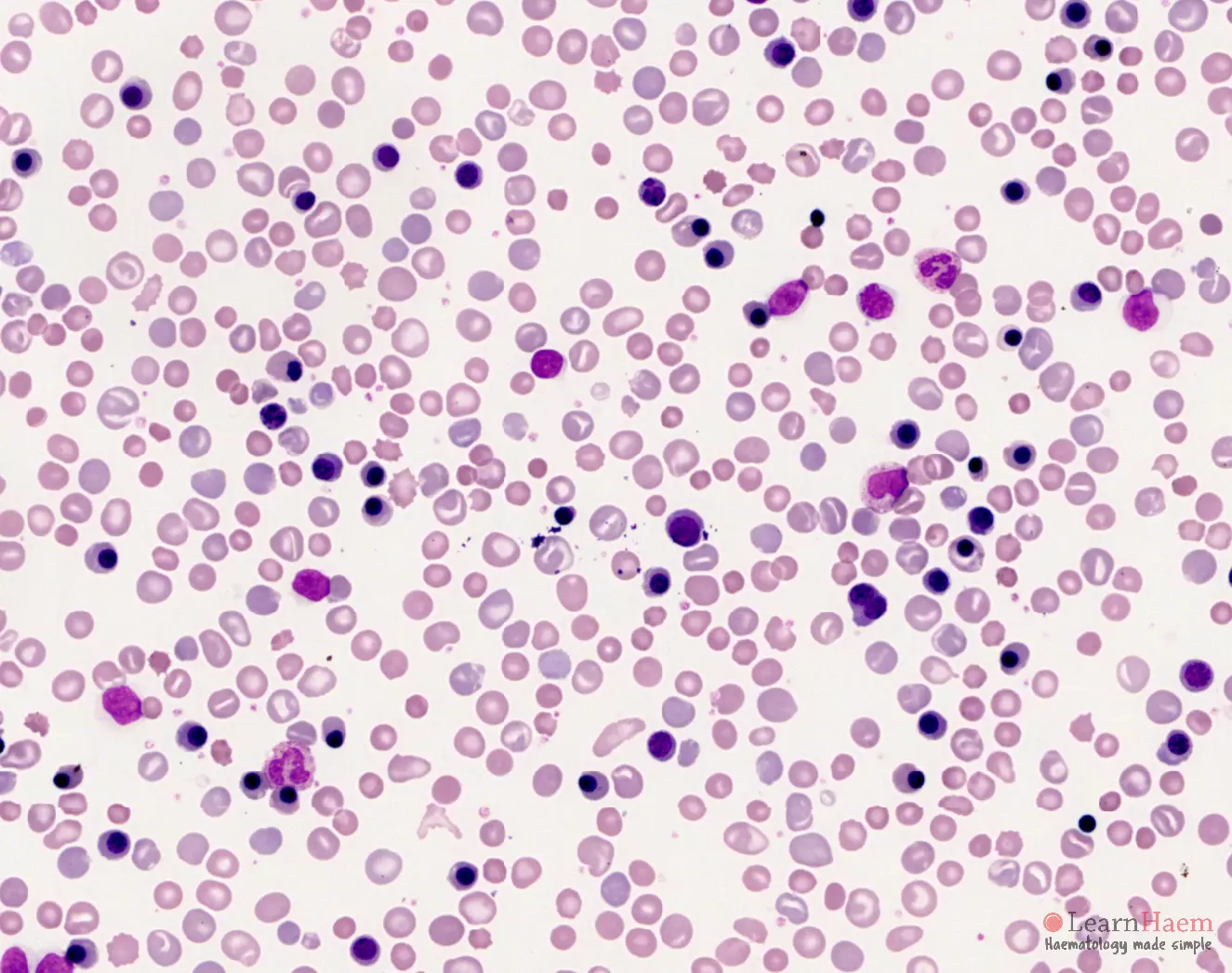Polychromasia refers red cells of a range of colours. This is typically from the normal pink to the to the purplish colour which results from the uptake of eosin by haemoglobin and basic dye by residual RNA.
Causes:
- Normal response to anaemia (provided sufficient erythropoietin / no haematinic deficiency)
- Normal response to hypoxia
- Polychromatic erythrocytes may be seen in primary myelofibrosis or carcinomatous spread to bone marrow. Such cells are not always macrocytic, and may be more deeply basophilic than reticulocytes.



Leave A Comment